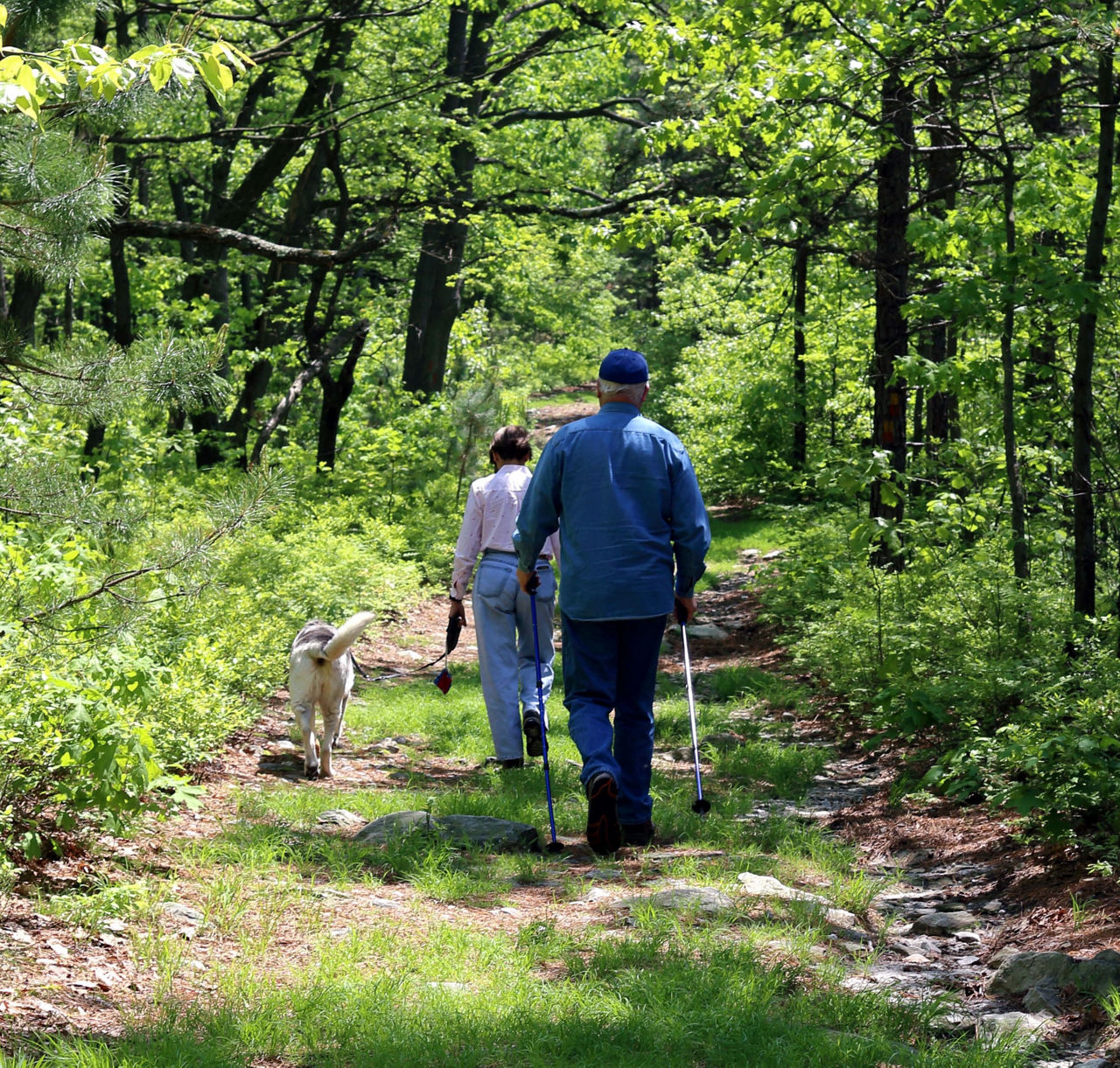Overview
Bald Eagle State Forest, named for the famous Native American Chief, Bald Eagle, includes 194,602 acres in:
- Snyder County
- Union County
- Centre County
- Mifflin County
- Clinton County
It spans the high, sharp ridges of central Pennsylvania and features miles of pristine mountain streams and numerous tracts of old-growth forest.
From the limestone-rich Susquehanna Valley in the southeast to the Allegheny Mountains in the northwest, the forest district is dominated by a series of sandstone ridges, some of which reach 2,300 feet above sea level.
The confluence of the west and north branches of the Susquehanna River occurs on the eastern boundary of the district, opposite the town of Northumberland.
Many streams within the area originate in its forested ridges and flow in several directions, eventually emptying into the Susquehanna River.
Public watersheds comprise over one-third of Bald Eagle State Forest, making the wise management of this land essential.
Explore Bald Eagle State Forest
The Department of Conservation and Natural Resources Bureau of Forestry manages our state forests for their long-term health and productivity while conserving native wild plants. These forests are “working forests” and provide a whole suite of uses and values to Pennsylvania citizens, all while maintaining the forest’s wild character.
Our state forests are managed for:
- Pure water
- Recreation
- Scenic beauty
- Plant and animal habitat
- Sustainable timber and natural gas
- Many other uses and values
The management of our state forests is guided by the State Forest Resource Management Plan.
A district-level state forest resource management plan is written for each of the bureau’s 20 forest districts across the state.
Using public input and building on the statewide 2016 management plan, the Bureau of Forestry revised and completed a new Bald Eagle State Forest Resource Management Plan (PDF), setting district-level management priorities.
The Department of Conservation and Natural Resources Bureau of Forestry uses surveys to gain insight into recreational use of state forests, which helps guide management of recreational resources.
Please read the Bald Eagle State Forest Visitor Use Monitoring Report (PDF) to learn more.
The Bald Eagle State Forest’s 2025 Management Activities (PDF) provides information about upcoming projects and events to implement the State Forest Resource Management Plan.
Local state forest harvest schedules promote and maintain desired forest landscape conditions while providing a sustainable flow of forest products.
The Bureau of Forestry has adopted “ecosystem management” as its principal strategy for managing state forests. This approach seeks to conserve the natural patterns and processes of the forest while advancing long-term sustainability.
Ecosystem management promotes the conservation of plant and animal communities and the landscapes and habitats that support them. It also accounts for needs and values of people and communities.
This results in a holistic, integrated approach to managing forest resources.
As you travel throughout the state forest, you’ll see examples of our forests “at work.” Some of these management practices are more noticeable than others, such as:
- Active timber harvests
- Deer exclosure fences
- Natural gas drilling sites
- Prescribed fires
- Gypsy moth spraying
Others are more subtle, such as:
- Protection of a vernal pool
- Buffering a stream from timber harvesting
- Setting aside a special area to conserve its wild character or protect a rare plant community
Each of these management practices and activities plays a vital role in the management and conservation of our state forest system.
Pennsylvania’s 2.2-million-acre state forest system is one of the largest dual certified forests in North America. The forest is certified under Forest Stewardship Council™ and Sustainable Forestry Initiative© standards.
The Forest Stewardship Council™ is an independent organization supporting environmentally appropriate, socially beneficial, and economically viable management of the world’s forests.
The Sustainable Forestry Initiative© certification focuses on protection of water quality, biodiversity, wildlife habitat, species at risk, and forests with exceptional conservation value.
Dual certification ensures that Pennsylvania’s state forests are managed to the highest third-party standards.
A forest stewardship demonstration area, located on Stony Run Road, one-half mile north of Route 45 near Laurelton in Union County, contains a self-guided trail that highlights the results of various timber harvesting practices.













